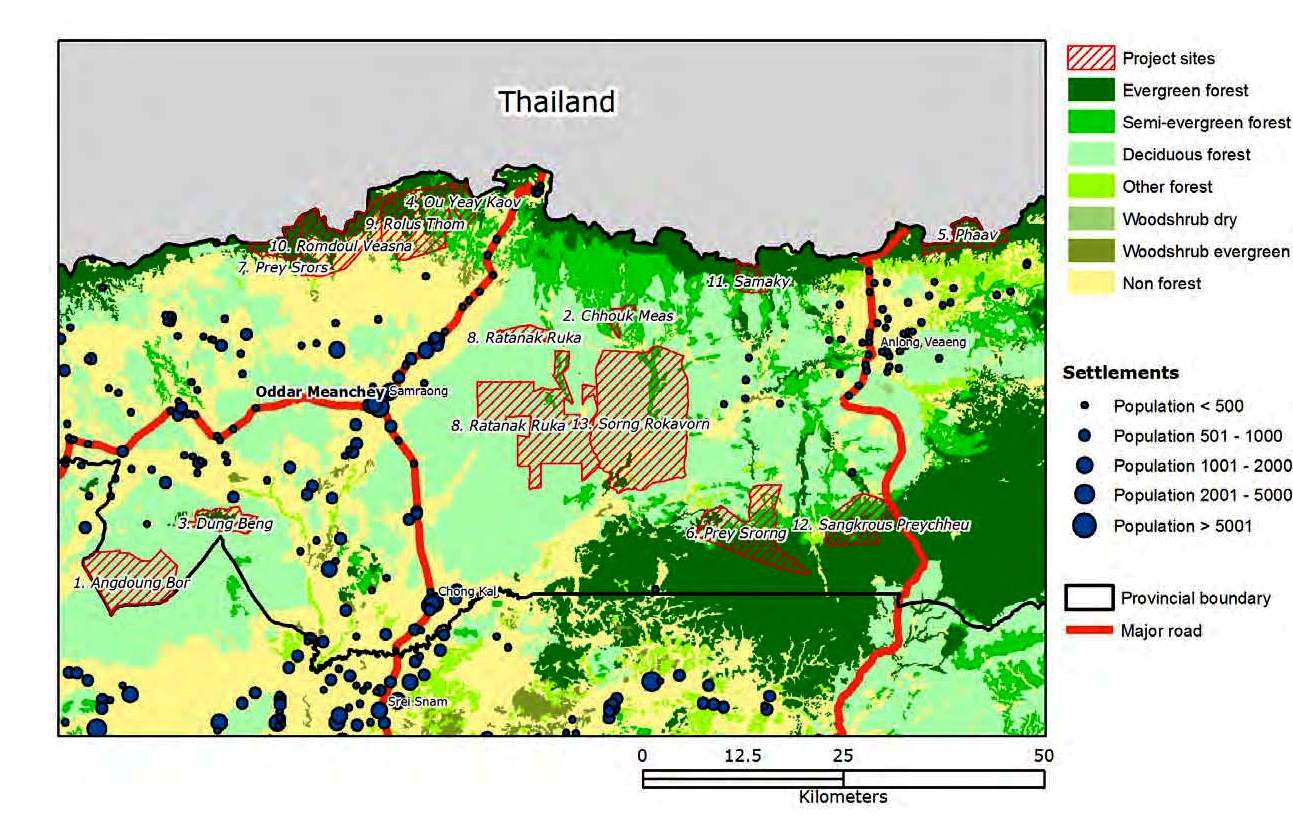
Bird-eye-view of Ta Muean Thom
The compound has 3 towers, The principal one in the central and the smaller one on its left and right, made from pink sandstones.
Two laterite wihan exist on the East and West. The compound is surrounded by sandstone cloister. Of the four gopuras, entrance pavilions, the southern one is the biggest and links to the balustrade that drops off to the slope in Cambodia.
A pond lies on the north outside the cloister. A Khmer inscription on the southeastern cloister refers to a person named Phra Kalapa Krisna
This ruin was presumably dedicated to Hindu God Shiva, constructed in the 11 th century before the other 2 ruins in this group.
No man - made lingum is found here. A big rock, representing lingum, is found in the principal tower, similar to the one found at Yot Phu Kao in Champasak in southern Laos.


It is suggested that visitors should visit the innermost Prasat Ta Muean Thom first, before coming back to the nearer Prasat Ta Muean Tot and Prasat Ta Muean.

Lintel at Prasat Ta Muean
Locally called Prasat Bai Khrim, This edifice is supposed to be 1 of the 17 rest stops for the pilgrims, constructed by the command of King Chaiyaworaman VII along the capital of the Khmer Empire. To Phimai.
This laterite solitary tower faces East. An elongated room adjoins the front of the tower. Fake windows were sculpted on the northern wall, while real windows exist only on the southern one. The remaining southern lintel depicts the Buddha in the posture of meditation.









0 comments:
Post a Comment